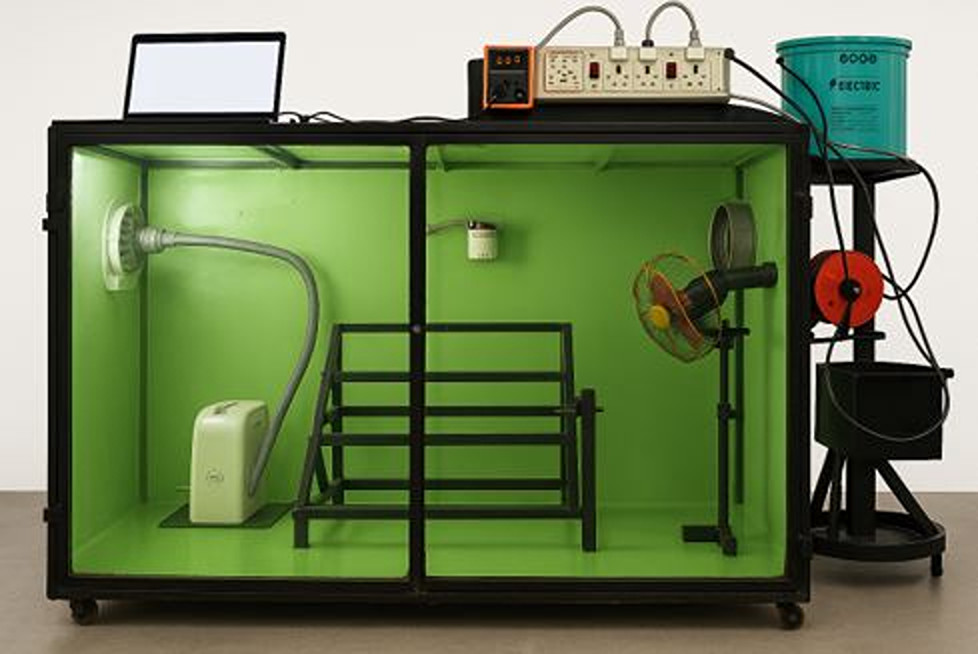Scientists in India have designed a new pollution room that is able to emulate the polluted conditions of a certain geographical location in a shorter time frame, with larger panels compared to conventional setups. The new room can be used to estimate the losing losses and cleaning costs for potential solar energy power plant locations, to improve existing pollution models, to investigate how tilt angle influence pollution and to evaluate the effectiveness and durability of anti-smaring coatings.
Researchers from the University of Tezpur in India have developed a new type of pollution room that is aimed at research Dynamics of dust structure on PV modules.
“The pollution chamber is able to pursue the polluted conditions of a certain geographical location in a shorter time frame,” the leader of the research project, Nbin Sarmah, told PV -Magazine. ‘In contrast to existing pollution rooms that can be typical of glass coupons of limited size, this room can be used for PV modules up to 0.76 mx 0.76 m, to replicate environmental factors such as temperature, moisture, wind, dust concentration and rain. “
“It is crucial to understand how dust is level and influences the PV performance, but the external performance of long-term studies is time-consuming and subject to fluctuating environmental conditions,” he continued. “The newly developed room wants to tackle this by offering a controlled environment where the impact of various factors can be studied.”
The new contamination chamber can be used to estimate pollution losses and cleaning costs for potential solar energy plants, to improve existing pollution models, to investigate how tilting angle influence pollution and to evaluate the effectiveness and durability of anti-sowing coatings.
In the newspaper “Development of a polluted room for indoor waste loss studies to solar pv -power generation“Published in Solar energyThe research team explained that the new room can Reproduce outdoor -directed long -term effects in a shorter time scale.
The external dimensions of the room are 1.5 mx 1.2 mx 1.0 m and the working volume is 1.0 mx 0.85 mx 0.7 m. It uses a water sprayer with a mouthpiece on top to reproduce rain events and a dust spray to vary the concentration of fabrics in the room. Moreover, it relies on a heating to keep the temperature uniform over the tested PV modules and a fan to simulate wind, with different humidifiers and dehumidifiers who regulate humidity.
“The pollution chamber is built from iron plates and garnished with a heat scolding thermal barrier. A soft steel plate is used in the manufacture of the closed room,” the papers notes. “Thermal insulation is guaranteed by placing a hardwood lid over the iron plate and inserting glass wool between the two.”
The performance of the Chamber was validated with the help of outdoor pollution measurements taken at two different locations in India for a period of one year and the scientists discovered that it could replicate the outside conditions with minimal deviations in terms of both dust density and power.
“The power in power between an emulated and exposed module was determined as 1.5 % for a 20Wp PV module on location A and 1.6 % for a 40Wp PV module in site B,” Sarmmah explained. “The difference in dust density between artificially polluted and external modules was only 0.08 g/m2 For the first site, located near a trade and 0.02-0.04 g/m2For the second site, located in a rural area. “
The room was developed by Tezpur University with the support of Sapienza University of Rome in Italy and the Jorhat Institute of Science and Technology from India.
This content is protected by copyright and may not be reused. If you want to work with us and reuse part of our content, please contact: editors@pv-magazine.com.

